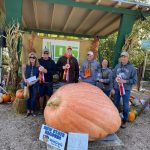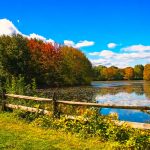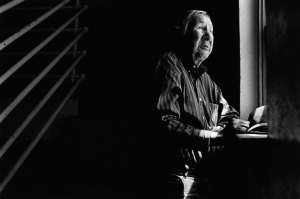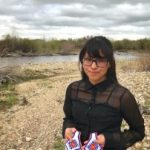When Sara Wiles moved to Wyoming in 1973 for a job as a social worker on the Wind River Indian Reservation, she quickly developed an enduring hobby.
Wiles began photographing the people, events and day-to-day life on the reservation.
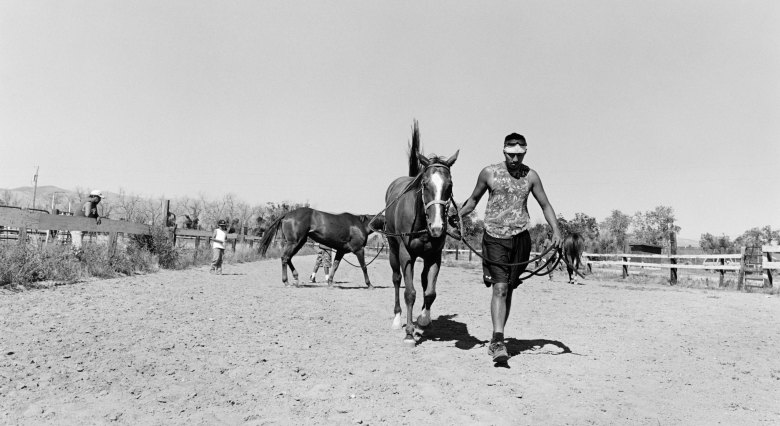 Avid horseman and Indian relay team member John Redman, Jr. walks one of his relay horses to cool him down following a practice session at the track at Fort Washakie in 2014. (Sara Wiles/The Arapaho Way)
Avid horseman and Indian relay team member John Redman, Jr. walks one of his relay horses to cool him down following a practice session at the track at Fort Washakie in 2014. (Sara Wiles/The Arapaho Way)
“I was working out there, I was getting to know the people and I was adopted into an Arapaho family,” she said. “My background is in anthropology, and I was just really fascinated by the Northern Arapaho and Eastern Shoshone ways of life.”
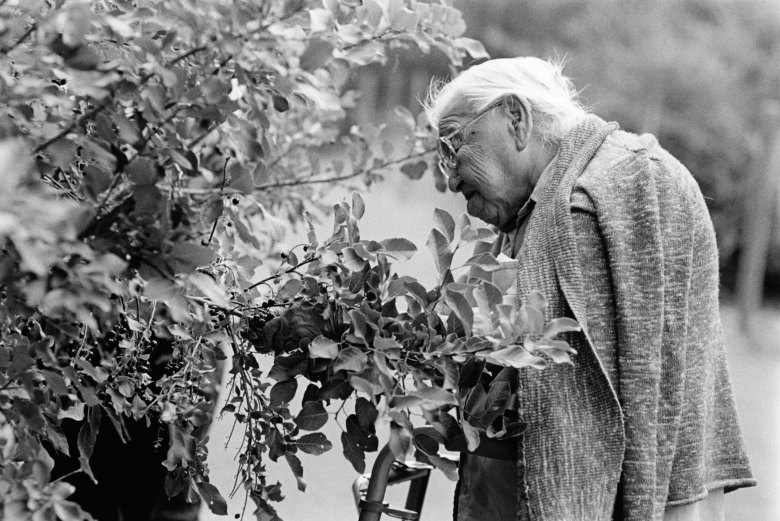 Lucy Redman Willow picking chokecherries at Canyon Ranch in 2016. (Sara Wiles/The Arapaho Way)
Lucy Redman Willow picking chokecherries at Canyon Ranch in 2016. (Sara Wiles/The Arapaho Way)
Wiles photographed community feasts and basketball games, ceremonies and life events. She chatted with elders while lunching at senior centers. She spent a lot of time with the Moss family that had taken her in. As she grew to know the community, she said, many shared the colorful and compelling stories of their lives.
 Paul Moss, Sr. telling stories in his home near Ethete in 1990. He is part of a long line of skilled storytellers. (Sara Wiles/The Arapaho Way)
Paul Moss, Sr. telling stories in his home near Ethete in 1990. He is part of a long line of skilled storytellers. (Sara Wiles/The Arapaho Way)
Over the years, Wiles amassed an enormous volume of images, always with permission. Never one to switch to digital, Wiles shot everything on black and white film and developed the images in her darkroom. Each photo, she said, had a story.
Many appear in Wiles’ new photo book, “The Arapaho Way.” Interspersed throughout Wiles’ images are essays and stories about a community that she said is often simplified and misunderstood.
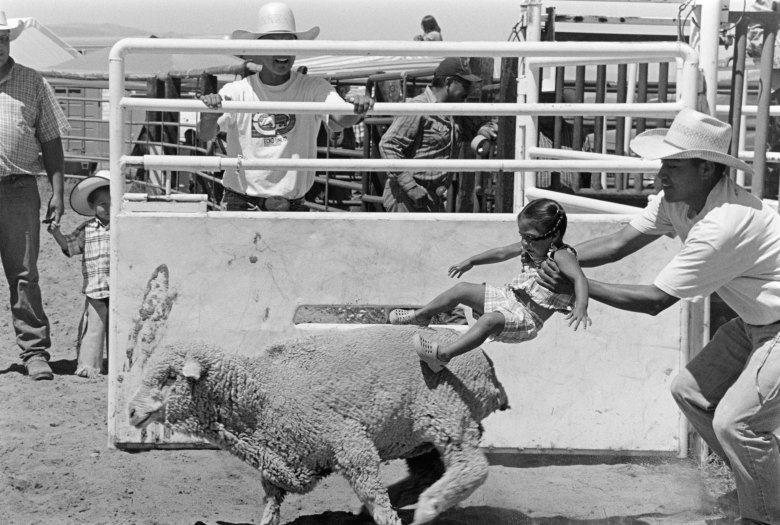 Brandon Lincoln holds his daughter Breana Lincoln tight during a “mutton busting” event at a 2010 youth rodeo in Ethete. Lincoln worked as a professional “rodeo warrior” and “bullfighter” — acting as the distraction for bulls during bull riding events — and was teaching his children to love rodeo. (Sara Wiles/The Arapaho Way)
Brandon Lincoln holds his daughter Breana Lincoln tight during a “mutton busting” event at a 2010 youth rodeo in Ethete. Lincoln worked as a professional “rodeo warrior” and “bullfighter” — acting as the distraction for bulls during bull riding events — and was teaching his children to love rodeo. (Sara Wiles/The Arapaho Way)
Over the years, Wiles said, she’s watched many people come to the reservation with what seem like preconceived notions of what they were going to study or convey. “It always seemed to me there was something lacking into that approach,” she said. “You are trying to fit people into categories or molds, or you are trying to fit what you want to say into some kind of structure.
“I was trying to get away from that and just let the people be people … and talk about their history without putting a structure on it.”
 Helen Cedartree at her home at Ethete in 1990. (Sara Wiles/The Arapaho Way)
Helen Cedartree at her home at Ethete in 1990. (Sara Wiles/The Arapaho Way)
“The Arapaho Way” features more than 100 images spanning 35 years of Wiles’ work, along with historic pictures she picked up along the way. It is Wiles’ second book of photography focused on the Wind River Indian Reservation.
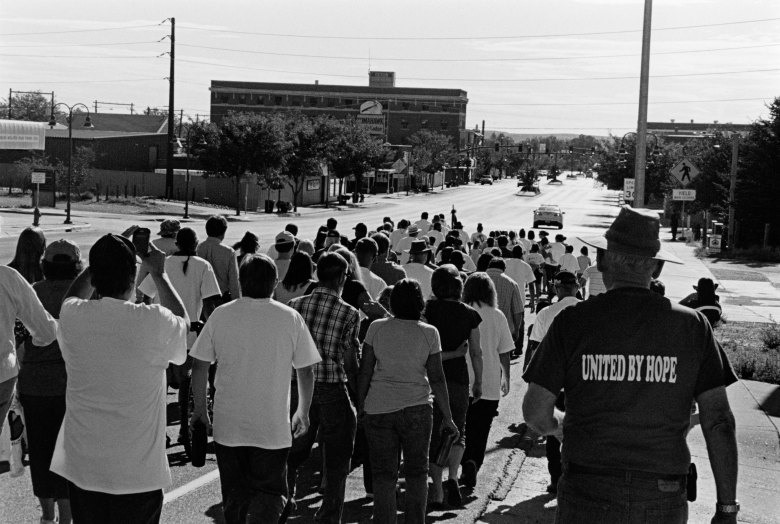 A Community Peace March proceeds through downtown Riverton Aug. 8, 2015, two weeks after the shooting of Stallone Trosper and James “Sonny” Goggles, Jr. at the Center of Hope Detox Center. (Sara Wiles/The Arapaho Way)
A Community Peace March proceeds through downtown Riverton Aug. 8, 2015, two weeks after the shooting of Stallone Trosper and James “Sonny” Goggles, Jr. at the Center of Hope Detox Center. (Sara Wiles/The Arapaho Way)
In its pages are stories of ranchers, horsemen, storytellers, performers, activists and families. There are stories of pain, triumph and of community members supporting one another through it all.
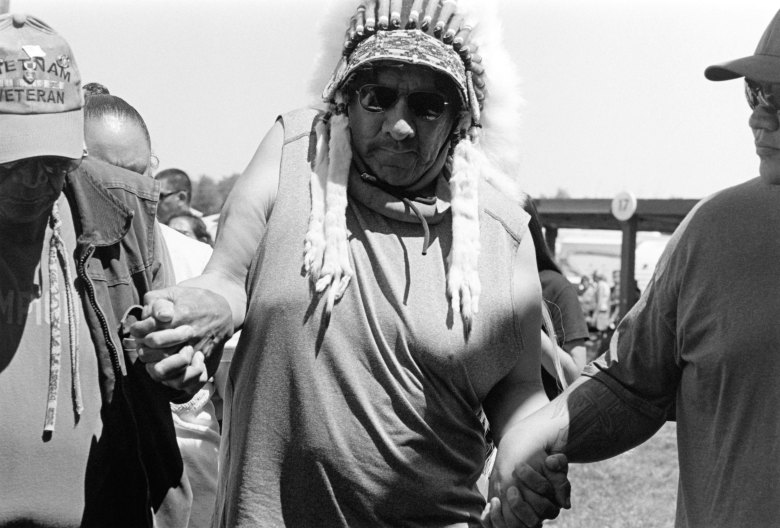 Sonny Goggles, who was gravely injured when he was shot by a parks worker while he slept at the Hope Detox Center in Riverton, is escorted into the powwow arena by his nephew William Harris, Jr. on the right, and his uncle Eugene Goggles on the left. (Sara Wiles/The Arapaho Way)
Sonny Goggles, who was gravely injured when he was shot by a parks worker while he slept at the Hope Detox Center in Riverton, is escorted into the powwow arena by his nephew William Harris, Jr. on the right, and his uncle Eugene Goggles on the left. (Sara Wiles/The Arapaho Way)
“People have these two images of the reservation. One is the powwows. The other is the poverty side,” Wiles said. “I try to avoid those extremes.”
Wiles’ images will be shared in presentations and exhibits throughout the state.
Help wyomingdigest.com tell important Wyoming stories with a tax deductible donation
The post Photography: Continuity, change and the Arapaho way appeared first on wyomingdigest.com.



